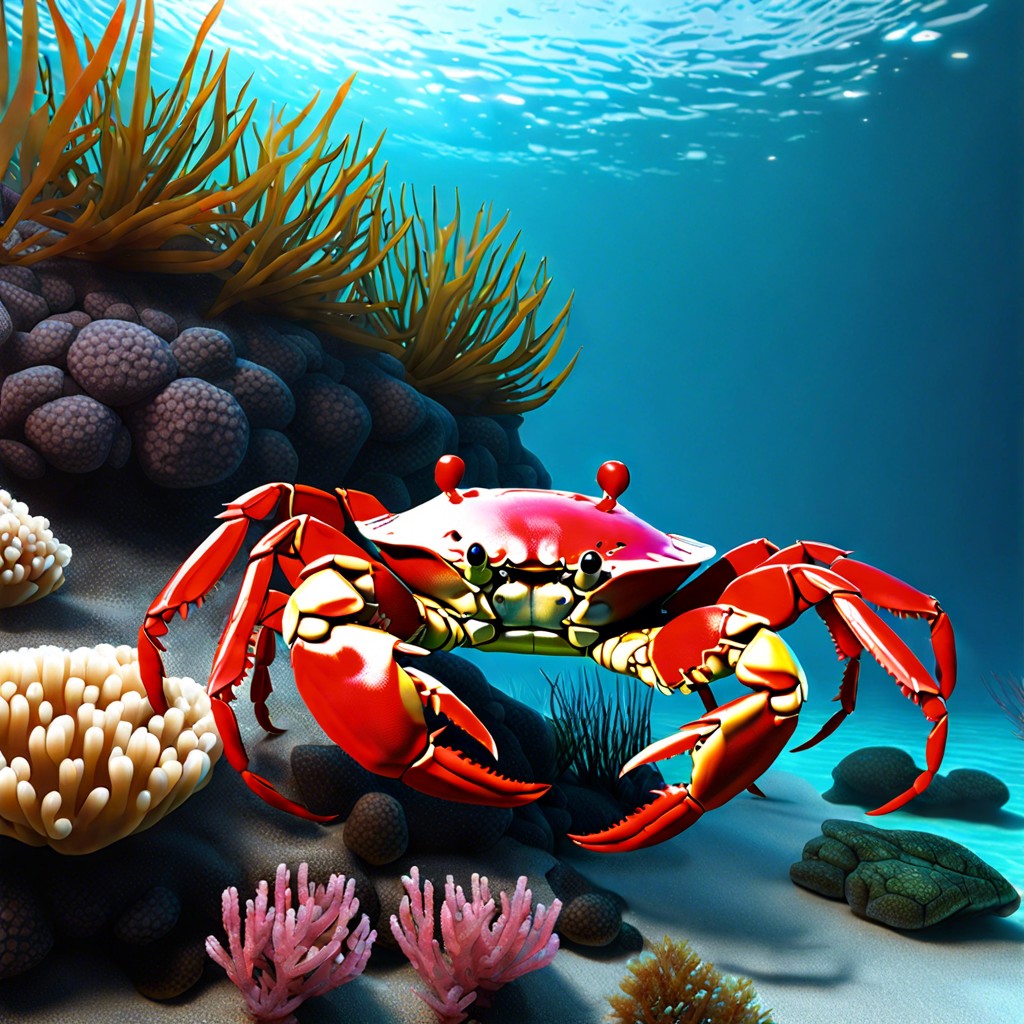Get ready to learn all about the intriguing world of red crabs, their lifecycle, and their famous migration!
Overview of the Red Crab

Meet the star of Christmas Island, the red crab! These bright crimson critters are more than just eye candy in the ecosystem; they play a crucial role in tropical forest revitalization. Every year, millions of these little engineers scuttle from the forest to the coast to spawn, a mass migration that paints the island red and captivates nature enthusiasts worldwide.
Life isn’t always a beach party for these crabs, though. Their journey is an obstacle course, dodging cars, and cunning yellow crazy ants, an invasive species that poses a significant threat. But it’s not just about survival; these crabs are also key decomposers, munching on fallen leaves and fruits, keeping the island clean and fertile. So, next time you see a red crab, remember, they’re not just walking seafood platters; they’re environmental heroes!
Ecological Importance
Red crabs are like the unsung heroes of their ecosystems, playing a key role that often goes unnoticed. They contribute significantly to the nutrient cycle simply by munching away on leaf litter and other vegetation, turning what would be detritus into fertile soil. Think of them as nature’s little recyclers!
Their burrowing habits also work wonders. These activities aerate the soil, which helps more plants grow, further stabilizing the ecosystem. It’s like they’re tiny gardeners, helping to keep their home tidy and flourishing.
Besides, their presence in the food chain keeps things balanced. As a prey species for birds and larger land crabs, they help sustain a variety of life forms. Without these vibrant critters popping up on the beach and scurrying about, many predators would be struggling to find a meal. Quite the busy life for a creature that’s just trying to dodge being lunch!
Conservation Status and Efforts
The world of red crabs isn’t just fun and games when it comes to surviving on this big blue planet. These little creatures play a major role in their ecosystem, and they’re facing some tough challenges. Overfishing and loss of habitat have hit them hard, putting their future in jeopardy.
Enter the heroes, both in lab coats and diving gear! Scientists and conservationists are tirelessly working to turn the tide. They’re setting up protected areas where crabs can live and breed without interference. Meanwhile, regulations and sustainable fishing practices are helping to ensure that crab populations stay healthy.
Awareness campaigns are also playing a big role. Educating seafood lovers about the importance of choosing sustainably sourced crab meat can make a big difference. Every choice at the supermarket can be a vote for conservation!
Conserving red crabs isn’t just good for the crabs. It helps maintain the balance of marine life and ensures that future generations can also enjoy these colorful critters. Who knew those little red shells carried so much weight?